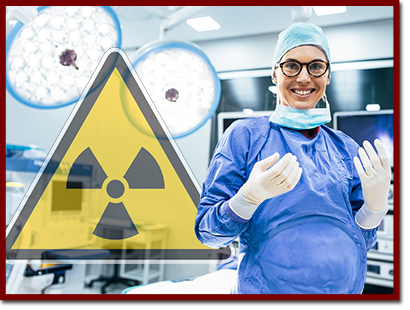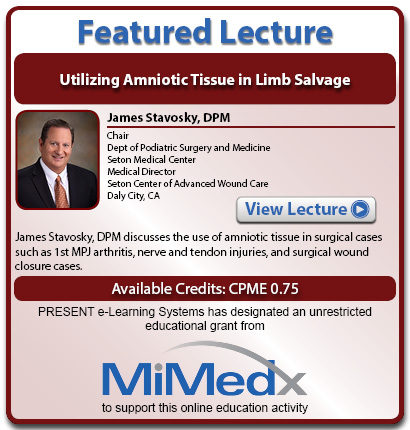|
|
|
|
Is it Safe for Pregnant Surgeons in the OR?
Part 1: Establishing the Numbers
|
|
|
|
|
|
|
For much too long in the history of medicine, only men were allowed to be physicians. Luckily for all of us today, women are physicians in increasing numbers. The American Association of Medical Colleges reports that female enrollees to medical schools were 50.7% of the 21,338 matriculants in 20171. In podiatry, the gender gap also exists, with a reported 2015 ratio of 75% men to 25% women with 39% of students being women2. Clearly, more work needs to be done on this front. However, in my life as a podiatry college teacher and residency educator, I spend a good deal of time with female surgeons, whether they’re my colleagues, residents, or students.
|
|
|
As a male doctor, I approach practice life from a male perspective. As a result, I don’t spend a lot of time worrying about radiation exposure to my unborn child during a fluoroscopy-assisted surgical procedure. However, it is important to consider safety for all of our trainees, and we must be cognizant of the fact that many female podiatric residents are in their prime child-bearing years. As such, pregnancy during training and early practice is reasonably common. It becomes incumbent upon all of us to be aware of the potential dangers to a pregnant podiatrist’s fetus. This is a highly important question for our female colleagues because it can become a significant limitation to training and practice if it is unsafe for a podiatric surgeon to use fluoroscopy. The important question, then, is…
|
|
Get a steady stream of all the NEW PRESENT Podiatry e-Learning by
becoming our Facebook Fan.
Effective e-Learning and a Colleague Network awaits you.
|
|
|
|
Is it safe for a pregnant podiatrist to use fluoroscopy in the operating room?
|
|
|
We must first recall the guiding ALARA principle of radiation exposure in medicine. As Low As Reasonably Allowable guides us to minimize damaging radiation exposure as much as possible, but is there a reasonably allowable dose a female surgeon and her fetus may be exposed to in the operating room? Let’s talk this week about some important background information and then answer this important question next week.
|
|
|
A few things will make us all feel better about all of this. First, because the surgeon is not in direct line of the X-ray beam, she will be affected by scatter radiation rather than direct absorption. Scatter radiation depends on exposure time, mass of the body part being exposed, distance from the radiographic field, and the emission setting of the C-arm3.
|
|
Subscribe Now To see Conference Videos, Interviews, Sneak Peek Lecture Videos, and More!
|
|
|
|
The good news is since the foot and ankle have relatively low mass, there will be less scatter radiation compared with a larger body part such as the torso. Also, the dose of radiation will decrease by distance according to the inverse square law in which the radiation decreases by the square of the distance. That means moving away from the area a small amount has a faster drop in concentration and less exposure risk. The surgeon can also minimize “live” imaging in favor of single shots.
|
|
|
|
|
To understand the rest of this discussion it’s helpful to review some pertinent concepts regarding radiation safety and reporting.
-
Radiation is reported in grays (Gy) (1 joule of radiation energy/kilogram of matter) or Sieverts (Sv) (also 1 joule of radiation energy/kilogram of matter). Biological effects are reported in Sieverts. The gray replaced the “rad” as a method of reporting radiation.
-
Rems is also a common method of reporting radiation dosage in humans.
-
1 Rad = 0.01 Gy = 0.01 Sv = 100 Rem
-
Because the numbers can be cumbersome, radiation is often reported as millisieverts (mSv).
-
The Occupational Safety and Health Administration (OSHA) states the maximum permissible occupation dose is 5 rems (50mSv).
|
|
|
|
|
Numbers are good, but to maintain our perspective on what they mean, consider the following statistics:
-
A flight from Los Angeles to London will expose a person to 5 mrem of radiation.
-
Natural sources in the environment exposes us to 300 mrem/year.
-
Cosmic radiation (composed mostly of high energy protons and atomic nuclei) exposes people to 0.27 mSv/year (0.027 rem/year).
-
A chest radiograph exposes one to 0.1 mSv (0.01 rem) and a chest CT is 7 mSv (0.7 rem).
-
Lead apron thickness is important to protect healthcare providers. A 0.25mm thick apron decreases radiation by 90%; a 0.35mm apron decreases radiation by 95%; a 0.5mm thick apron decreases radiation by 99%.
|
|
|
A couple of last stats that will become important later:
-
The International Commission on Radiologic Protection (ICRP) recommends a maximum exposure of 20mSv/year (2 rem/yr).
-
The U.S. National Council on Radiologic Protection and Measurements (NCRP) recommends a maximum exposure of 50mSv/year (5 rem/yr).
|
|
Join Now To get the Latest News, Press Releases, Announcements, Conference Information, and More!
|
|
|
|
|
|
With that in mind, let’s ask the question, how much exposure do we receive during fluoroscopic-assisted surgery?
|
|
|
This turns out to be a tough question to answer because surgeons are inconsistent and poorly compliant with the use of dosimeters as well as high variability between types of cases3. With this weakness in mind, let’s try to gather as much information as possible to answer this question.
|
|
|
Performing intramedullary nailing of a femoral peritrochanteric fracture exposes the surgeon to 0.1 mSv/procedure (0.01 rem/procedure)4. A study examining eye-level radiation exposure in 131 upper and lower limb orthopedic procedures found an average exposure of 0.02 mSv/procedure (0.002 rem/procedure)5. Interestingly, the mean exposure for ankle fracture ORIF was 0.01 mSv/procedure (0.001 rem/procedure)5.
|
|
|
|
|
The researchers in this study placed the dosimeters on the outside of a thyroid shield, and as mentioned before, an apron of 0.5mm thickness that decreases the radiation exposure by 99% would lead to a surgeon's exposure during an ankle fracture ORIF of 9 x 10-5 rem. Yes. That’s an incredibly small amount! Makes me feel good to be a podiatrist.
|
|
|
Let’s bottom-line this, friends. As of now, it looks like the radiation exposure a podiatric surgeon receives during a procedure, especially using a lead apron, is incredibly low. What does that mean for a pregnant podiatrist and the risk to her unborn child? We’ll see what the literature says next week.
|
|
|
|
-
More Women Than Men Enrolled in U.S. Medical Schools in 2017. AAMC News. December 18, 2017. Last accessed January 11, 2019.
Follow this link
-
Delzell E. Women’s Work: Overcoming Gender Barriers in Lower Extremity Specialties. Lower Extremity Review, October 2016.
Follow this link
-
Hayda RA, Hsu RY, DePasse JM, Gil JA. Radiation Exposure and Health Risks for Orthopaedic Surgeons. J Am Acad Orthop Surg. 2018 Apr 15;26(8):268-277.
Follow this link
-
Tsalafoutas I, Tsapaki V, Kaliakmanis A, et al. Estimation of radiation doses to patients and surgeons from various fluoroscopically guided orthopaedic surgeries. Radiat Prot Dosimetry. 2008;128(1):112-119.
Follow this link
-
Cheriachan D, Hughes AM, du Moulin WS, et al. Ionizing Radiation Doses Detected at the Eye Level of the Primary Surgeon During Orthopaedic Procedures. J Orthop Trauma. 2016 Jul;30(7):e230-e235.
Follow this link
|
|
This ezine was made possible through the support of our sponsors:
Grand Sponsor
Major Sponsor
|
|




















